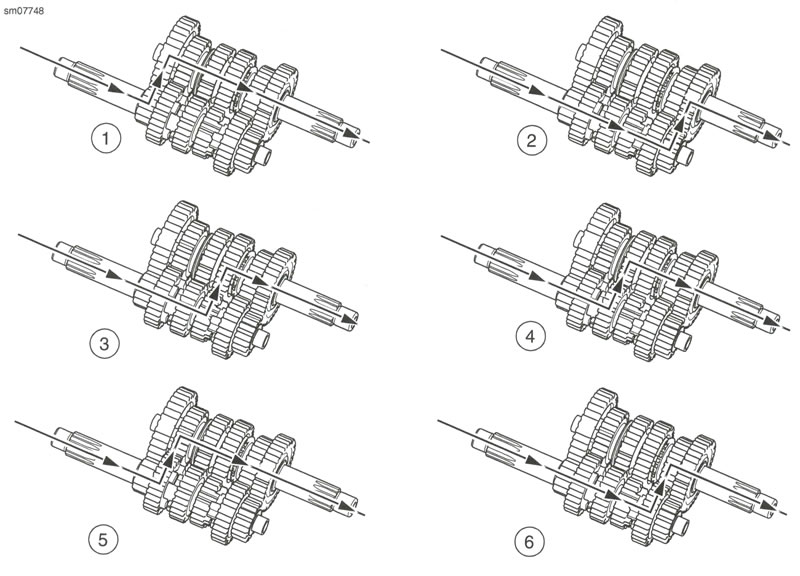Power flow
See Figure 5-1. The 6-speed transmission consists of two parallel shafts supporting six gears each. The input shaft, which supports the clutch. The output shaft which supports the transmission sprocket.
Each gear on the input shaft is in constant mesh with a corresponding gear on the output shaft. Each of these six pairs of gears makes up a different speed in the transmission.
The transmission gears are divided into two types, gears that rotate with the shaft, and gears that spin freely on the shaft. A gear that rotates with the shaft always meshes with a freewheeling gear.
Three forks are used to shift gears. A drum-shaped shifter, next to the input and output shafts, controls the position of the shifter forks.
Neutral
Power is introduced to the transmission through the clutch. In neutral with the clutch engaged, the input shaft first, second, third and fourth gears are rotating. No power is transferred to the output shaft since output shaft first, second, third and fourth gears are freewheeling gears.
First Gear
When the transmission is shifted into first gear (1), the first/fourth shift fork engages first gear to the output shaft.
Second Gear
When the transmission is shifted into second gear (2), the second/third shift fork engages second gear to the output shaft.
Third Gear
When the transmission is shifted into third gear (3), the second/third shift fork engages third gear to the output shaft.
Fourth Gear
When the transmission is shifted into fourth gear (4), the first/fourth shift fork engages fourth gear to the output shaft.
Fifth Gear
When the transmission is shifted into fifth gear (5), the fifth/sixth shift fork engages fifth gear to the output shaft.
Sixth Gear
When the transmission is shifted into sixth gear (6), the fifth/sixth shift fork engages sixth gear to the output shaft.

Figure 5-1. Transmission Power Flow: 1. First gear; 2. Second gear; 3. Third gear; 4. Fourth gear; 5. Fifth gear; 6. Sixth gear
